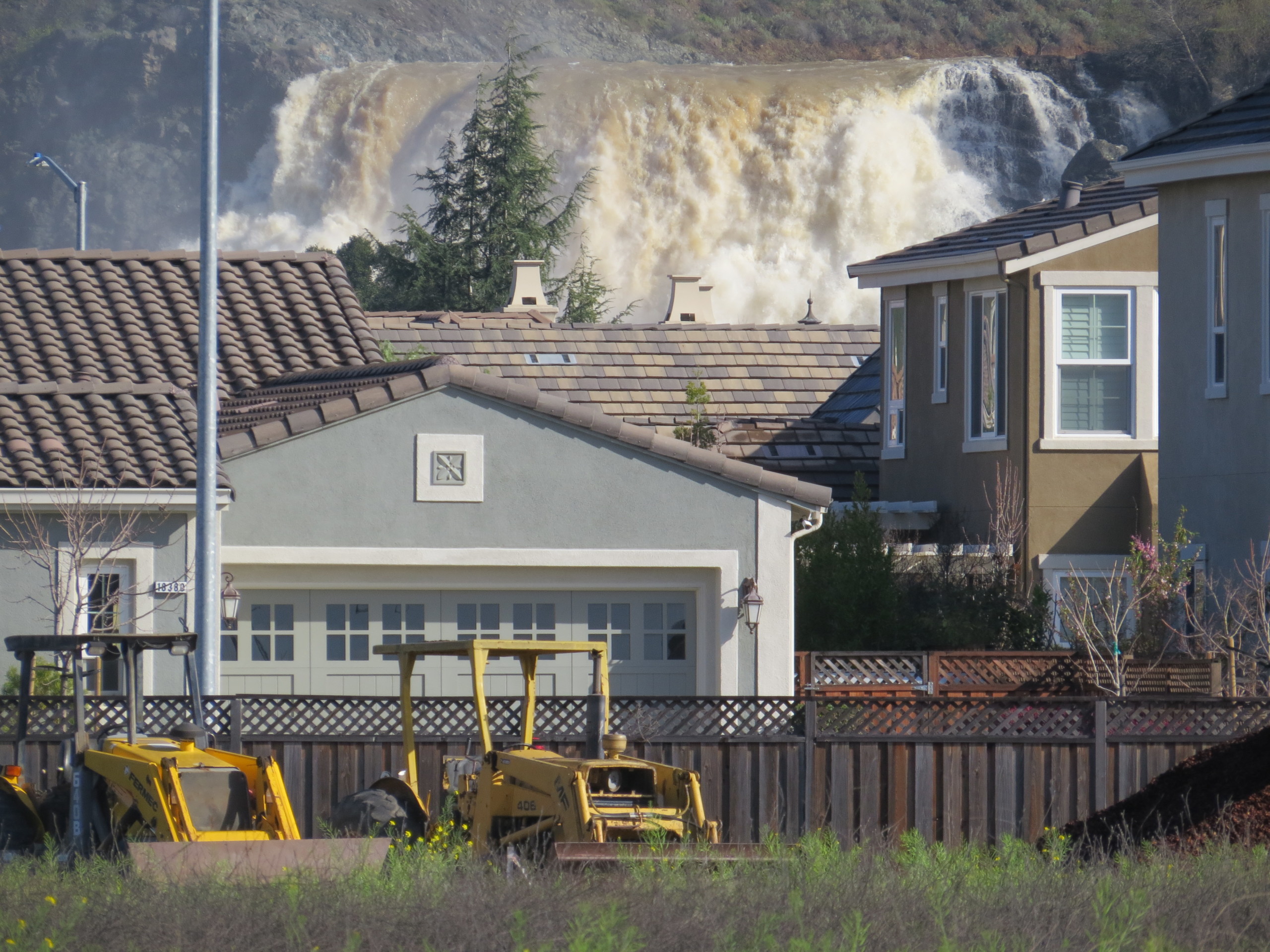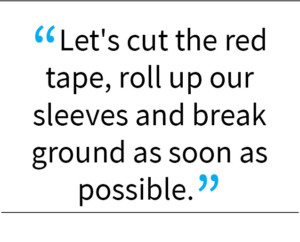Editorial: Time to eliminate red tape and get the dam rebuilt
Valley Water hopes to break ground on the five-year project in spring of 2021

Opinion of Gilroy Life
If Anderson Dam were to completely fail with the lake it holds at full capacity, the wall of water released would quickly devastate much of Morgan Hill. This disaster would be followed a few hours later by Gilroy and San Jose homes and businesses destroyed by the deluge. Thousands of lives would be lost. The destruction of much of Silicon Valley would shake the world’s economy for years.
The scenario is highly unlikely, but engineers warn that it could happen. Imagine the water line of Anderson Reservoir after a long series of winter rains stands at its highest point. That event did occur in February 2017. Now imagine the ground shakes as a major earthquake of at least 6.6 magnitude strikes on the Calaveras Fault directly at the reservoir. Or perhaps a magnitude 7.2 quake centered a mile away hits.
The 240-foot-high earthen Anderson Dam was built in 1950 when engineering standards were not as stringent as today. In December 2008, the water district learned that in that highly unlikely scenario, if the reservoir was full, the collapse would result in a 35-foot wall of water surging through downtown Morgan Hill within 14 minutes. As much as eight feet of the resulting flood would devastate Gilroy and San Jose three hours later.
 For years, Valley Water (once called the Santa Clara Valley Water District) has tried to fix the dam, a project with a cost estimate of $576 million. They have faced red tape. The delays come from environmental regulator agencies’ demands Valley Water must meet certain requirements before permits are issued. Valley Water needs permits from various state and federal agencies, including the U.S. Fish and Wildlife Service, National Marine Fisheries Service, California Department of Fish and Wildlife, State Historic Preservation Offices, U.S. Army Corps of Engineers, and the California State Water Resources Control Board.
For years, Valley Water (once called the Santa Clara Valley Water District) has tried to fix the dam, a project with a cost estimate of $576 million. They have faced red tape. The delays come from environmental regulator agencies’ demands Valley Water must meet certain requirements before permits are issued. Valley Water needs permits from various state and federal agencies, including the U.S. Fish and Wildlife Service, National Marine Fisheries Service, California Department of Fish and Wildlife, State Historic Preservation Offices, U.S. Army Corps of Engineers, and the California State Water Resources Control Board.
The saga grew more complicated last month when federal dam regulators ordered Valley Water to start by Oct. 1 completely draining Anderson Reservoir. Valley Water officials received a letter dated Feb. 20, 2020 from David Capka, director of the Federal Energy Regulatory Commission’s Division of Dam Safety and Inspections.
“It is unacceptable to maintain the reservoir at an elevation higher than necessary when it can be reduced, thereby decreasing the risk to public safety and the large population downstream of Anderson Dam,” Capka wrote.
The FERC official also told the water district it is taking too long in retrofitting the dam for seismic safety.
The water district has been “shovel ready” for years, said John Varela, a member of Valley Water’s board of directors and a Morgan Hill resident. The job of rebuilding Anderson Dam is an important one. It will protect lives and property and prevent the devastation of not just South Valley but also Silicon Valley, the world leader in technology-based job creation.
The project will create 5,400 good-paying jobs during a period of seven to nine years with a multiplying effect on regional economic activity reaching far beyond the half-billion-dollar infrastructure investment. Congresswoman Zoe Lofgren and her staff have taken on the task of cutting through red tape and starting on the project to protect California’s vital economic engine from inundation. Assemblymember Robert Rivas introduced a bill in Sacramento, AB 3005, to help cut through the red tape and speed up the regulatory process. Valley Water is also looking to engage local, state and federal lawmakers to help deliver this project in a timely manner.
Valley Water hopes to break ground on the five-year project in spring of 2021. We encourage the regulating agencies to be part of the solution and stop interfering in the progress of rebuilding Anderson Dam. The delay in construction they have caused resulted in FERC’s recent demands in draining Anderson Reservoir. That adds another level of complication to the situation. The federal agency’s order to empty the lake completely and so quickly could result in unsafe consequences.
One major environmental danger is the potential the draining would do in damaging the intake structure, resulting in the district having no way to control water flows out of the reservoir, potentially impacting downstream communities. Experts at Valley Water also say draining the reservoir will cause fish die-offs. Without a consistent flow in Coyote Creek, the stream bed will dry up, resulting in the loss of sensitive native fish, amphibians, reptiles, wetlands, and riparian habitats. Water quality could also be impacted downstream of the dam. With FERC’s new requirements, groundwater basins would also be impacted. These local aquifers are replenished with water released from Anderson Reservoir.
It’s now time to move forward with the Anderson Dam rebuild project. Let’s cut the red tape, roll up our sleeves and break ground as soon as possible.
- Editorial: Valley Water takes action against director’s misconduct - April 17, 2024
- Editorial: Prop 1 passes, addresses unhoused and mental health - April 5, 2024
- Editorial: Stay vigilant of online disinformation during election year - March 22, 2024
